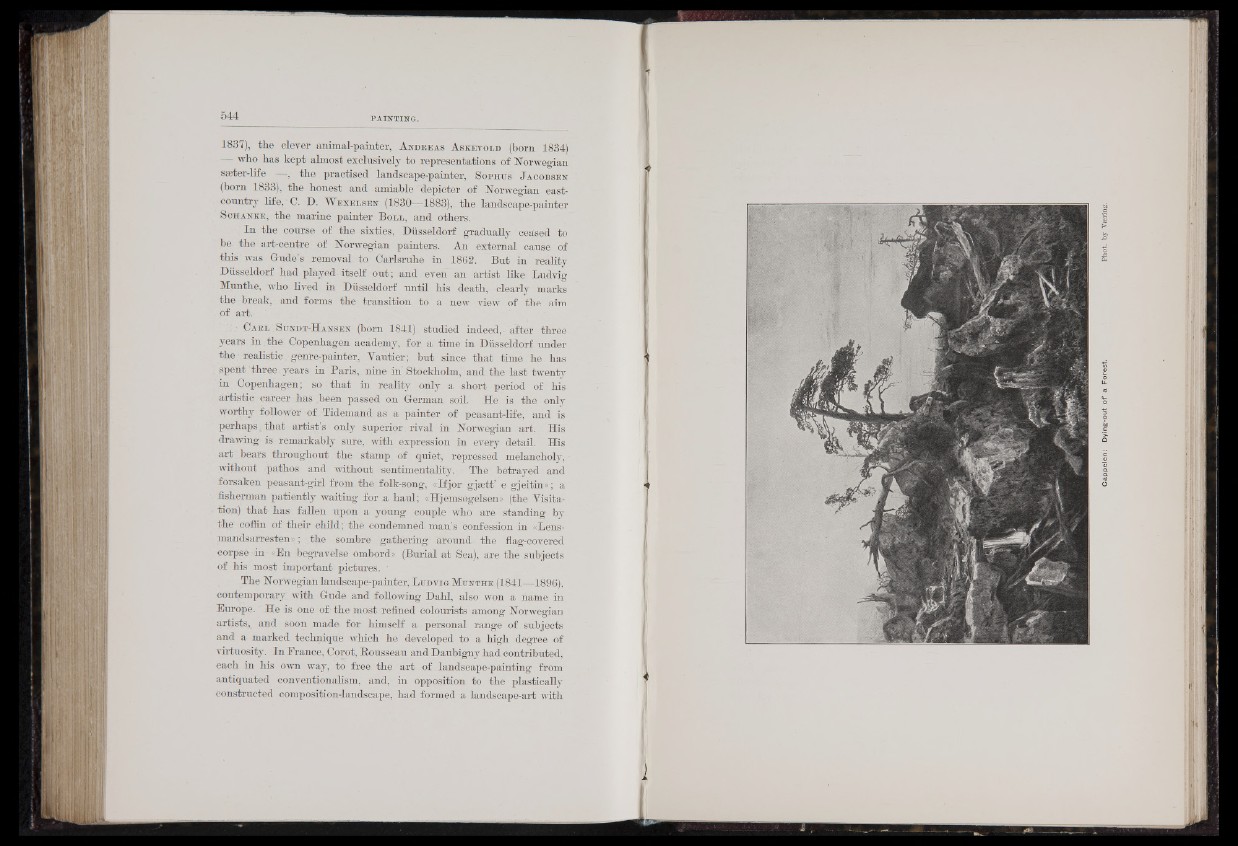
1837), the clever animal-painter, A n d b e a s A s k e v o l d (born 1834)
— who has kept almost exclusively to representations of Norwegian
sæter-life «--y the practised landscape-painter, S o p h u s J a c o b s e n
(born 1833), the honest and amiable Aepicter of Norwegian east-
country life, ' C. D. W e x e l s e n (1830—1883), the landscape-painter
S c h a n k e , the marine painter B o l l , and others.
In the course of the sixties, Düsseldorf gradually ceased to
be the art-centre of Norwegian painters. An external cause of
this was Gude’s removal to Carlsruhe in 1862. But in reality
Düsseldorf had played itself out; and even an artist like Ludvig
Munthe, who lived in Düsseldorf until his death, clearly marks
thé break, and forms the transition to a new view of the aim
of art.
,• C a b l S u n d t - H a n s e n (bom 1841) studied indeed, after three
years in the Copenhagen academy, for a time in Düsseldorf under
the ■ realistic. gènre-painter, Vautier; but since that time he has
spent three, years in Paris, nine in'Stockholm, and the last twenty
in Copenhagen; so that in reality only a short period of his
artistic career has been passed on German soil. He is the only
worthy follower of Tidemand as a painter of peasant-life, and is
perhaps,that artists only superior rival in Norwegian art. His
drawing is remarkably sure, with expression in every detail. His
art bears throughout the stamp of quiet, repressed melancholy,
without pathos and without, sentimentality. The betrayed and
forsaken peasant-girl from the. folk-song, «Hjor gjgett’ e gjeitin»; a
fisherman patiently waiting for a haul; «Hjemsogelsen» (the Visitation)
that has fallen upon a young couple who are standing by.,
the coffin of their child; the condemned man’s confession in «Lens-
mandsarresten» ; the sombre gathering around the Hag-covered
corpse in «En begravelse ombord» (Burial at Sea), are the subjects
of his most important pictures. '
The Norwegian landscapë-painter, L u d v ig M u n t h e (1841-^4896),
contemporary with Gude and following Dahl, also won a name in
Europe. He is one of the most refined colourists among Norwegian
artists., and soon made for himself a personal range of subjects
and a marked technique which he developed to a high degree of
virtuosity. In Prance, Corot, Rousseau and Daubigny had contributed,
each in his own way, to free the art of landscape-painting from
antiquated conventionalism, and, in opposition to the plastically
constructed composition-landscape, had formed a landscape-art with
¡HHts